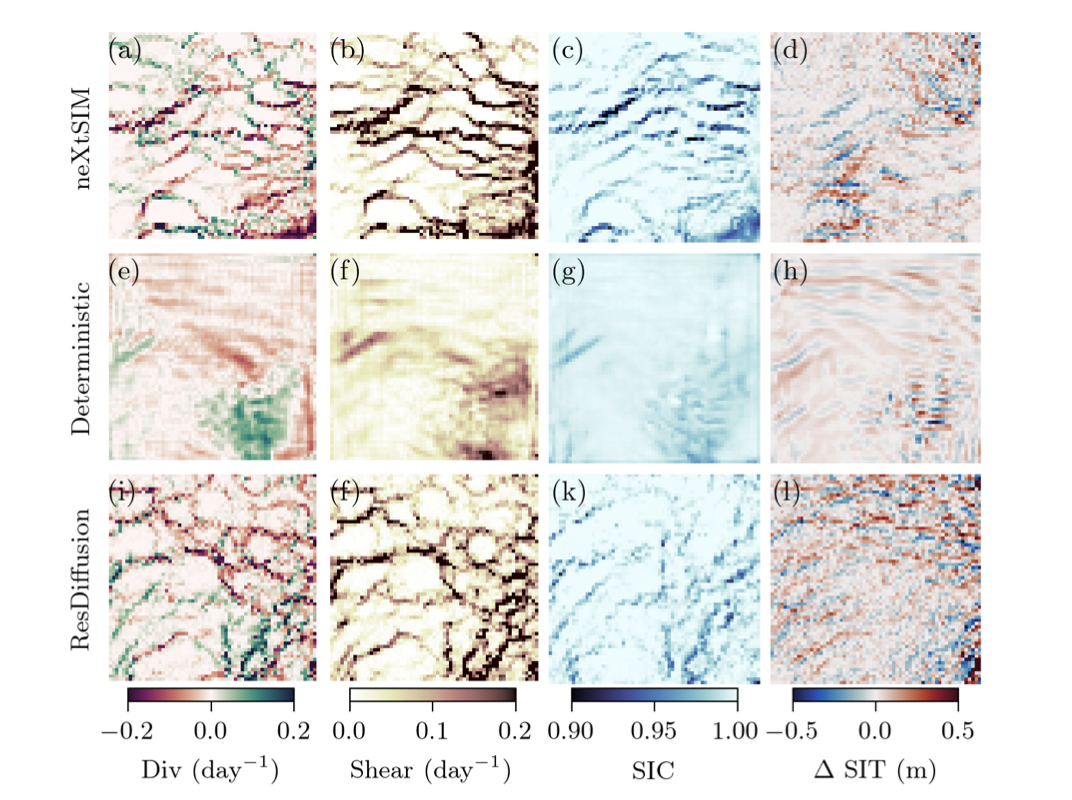Generative diffusion for regional surrogate models from sea-ice simulations, new preprint submitted in Authorea by Tobias Sebastian Finn, Charlotte Durand, Alban Farchi, Marc Bocquet, Pierre Rampal, Alberto Carrassi
Tobias Finn et al. present their exciting and novel approach to learn sea-ice models from data based on generative deep learning. They show that it can outperform more classical approaches, while generating physical consistent forecasts. The completely data-driven model seems to generalize to benchmark-like cases, where the predicted fields resemble those predicted by geophysical models. With these results, Finn et al. show a large potential of generative deep learning to achieve similar results as classical geophysical models while being order of magnitude faster and solely learned from data.

_Fig.6 (from Finn et al.):Snapshots of the divergence (a, e, and i), shear rate (b, f, and j), sea-ice concentration (c, g, and k), and change in the sea-ice thickness within 12 hours (d, h, and l) for the neXtSIM simulations (a–d), the deterministic forecast (e–h), and an ensemble member from the the diffusion forecast (i–l), the forecast is valid for 2017-12-30 at 03:00 UTC, a lead time of 50 days.




